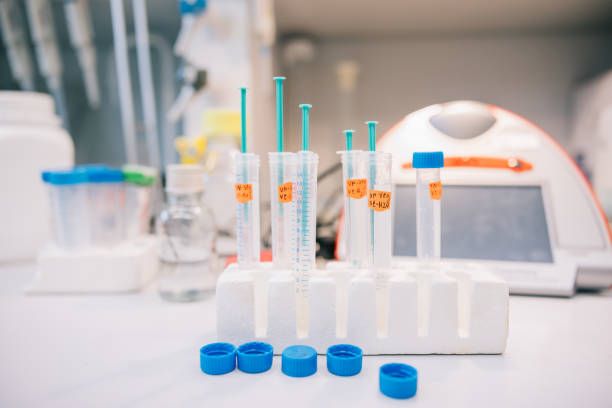Unlock your product's potential with our One-stop solutions!
+86-755-83222882

GET QUOTE
What Are the Key Factors for Choosing Plastics in Medical Devices?
Advantages of Plastics Over Metals in Medical Devices
Plastics offer a plethora of advantages over traditional metals when it comes to manufacturing medical devices.
Lightness and Reduced User Fatigue
Plastics are significantly lighter than metals, making medical devices more ergonomic and reducing user fatigue during prolonged use. For instance, plastic surgical tools are approximately 80% lighter than their metal counterparts, enhancing the overall user experience.
Design Flexibility and Versatility
Plastics provide greater design freedom and versatility compared to metals, allowing for intricate and customized designs to meet specific medical requirements. This flexibility expedites the manufacturing process and enables the production of innovative medical devices tailored to diverse needs.
Economic Efficiency and Cost-Effectiveness
Plastics offer a cost-friendly alternative to metals in medical device manufacturing. Not only are they more affordable, but they are also durable and often outperform devices made from materials like steel or ceramic. Their economic efficiency makes them an attractive choice for manufacturers seeking high-quality yet cost-effective materials.
Robustness and Chemical Tolerance
Plastics exhibit robustness and resistance to various external factors, including chemicals and environmental conditions. This makes them a dependable choice for medical instruments and devices exposed to harsh sterilization methods or chemical agents, ensuring their longevity and performance reliability.
Safety in Application and Biocompatibility
Medical-grade plastics are designed to be biocompatible, meaning they are safe for use in medical applications without causing harmful reactions in the body. This is crucial for devices like implants and surgical tools, where direct contact with bodily tissues is inevitable. Plastics' biocompatibility ensures patient safety and reduces the risk of complications.
Environmental Sustainability and Recyclability
Plastics support a sustainable approach to medical device manufacturing due to their recyclability. They can be repurposed multiple times, reducing the need for fresh material sourcing and minimizing environmental impact. Embracing recyclable plastics contributes to a greener and more eco-friendly healthcare industry.
Types of Polymers and Their Properties
Different types of polymers offer distinct physical attributes and properties, catering to various medical device requirements.
Thermoplastics: Reshaping Capabilities and Heat Resistance
Thermoplastics can be reshaped by heating within a certain temperature range and retain their form upon cooling. They offer excellent heat resistance, making them suitable for applications requiring sterilization and exposure to high temperatures.
Thermosets: Structure Maintenance and Insolubility
Thermosets maintain their form and structure after curing due to crosslinking, making them insoluble and durable. They are ideal for applications requiring mechanical and chemical stability, such as electrical systems in medical devices.
Elastomers: Stretchability and Snap-back Characteristics
Elastomers exhibit properties of both thermoplastics and thermosets, offering stretchability and resilience. They can stretch considerably and return to their original shape, making them suitable for applications like seals, gaskets, and O-rings in medical devices.
Commonly Used Thermoplastics in Medical Devices
Several thermoplastics are commonly employed in the manufacturing of medical devices, each offering unique properties and advantages.
Polyethylene: Durability and Lightness
Polyethylene is valued for its durability and lightness, making it ideal for a wide range of medical devices such as syringes and catheters. Its robustness ensures longevity, while its lightweight nature enhances user comfort and ease of handling.
Polypropylene: Versatility and Cost-Effectiveness
Polypropylene is known for its versatility and cost-effectiveness, making it a popular choice for medical device manufacturers. It finds applications in surgical instruments, labware, and packaging due to its durability, chemical resistance, and ease of molding.
Polymethyl Methacrylate (PMMA): Clarity and Optical Properties
PMMA offers exceptional clarity and optical properties, making it suitable for medical devices requiring transparency, such as intraocular lenses and dental implants. Its clarity allows for precise visualization during surgical procedures, enhancing accuracy and outcomes.
Polyvinyl Chloride (PVC): Flexibility and Applications
PVC is valued for its flexibility and versatility, making it suitable for a wide range of medical applications. It is commonly used in IV bags, tubes, and blood storage bags due to its ability to conform to various shapes and withstand sterilization processes.
Polyamide: Toughness and Surgical Tool Use
Polyamide, known for its toughness and resilience, is often used in medical devices requiring strength and durability, such as surgical tools and implantable devices. Its robustness ensures reliable performance in demanding clinical settings.
Acrylonitrile Butadiene Styrene (ABS): Robustness and Electronic Equipment
ABS offers robustness and impact resistance, making it ideal for medical devices, particularly electronic equipment casings and surgical instruments. Its ability to withstand mechanical stress and environmental factors ensures long-term reliability in medical applications.
Importance of Biocompatibility in Material Selection
Biocompatibility plays a crucial role in the selection of materials for medical devices, ensuring the safety and compatibility of devices with the human body.
Definition and Significance of Biocompatibility
Biocompatibility refers to the ability of a material to perform its intended function within the body without eliciting adverse reactions or harmful effects. It is essential to ensure that medical devices are well-tolerated by the body and do not cause inflammation, toxicity, or other complications.
Compliance with ISO 10993 Standards
Materials used in medical devices must comply with ISO 10993 standards, which establish guidelines for evaluating the biocompatibility of medical devices. These standards outline various tests, including cytotoxicity, sensitization, and irritation tests, to assess the safety of materials for human use.
Risks of Non-Biocompatible Materials
Non-biocompatible materials pose significant risks to patients, including inflammation, infection, and systemic toxicity. Using materials that are not biocompatible can lead to adverse reactions and complications, compromising patient safety and well-being.
Rigorous Testing Procedures and ASTM Standards
Materials undergo rigorous testing procedures, including ASTM standards, to evaluate their biocompatibility and ensure their suitability for medical use. These tests assess the potential for adverse reactions and toxicity, providing assurance of the safety and compatibility of materials with the human body.
FDA Regulatory Classes and Their Impact on Material Selection
Understanding the FDA regulatory classes is crucial for medical device manufacturers to ensure compliance and safety.
Overview of FDA Regulatory Classes (Class I, II, III)
The FDA categorizes medical devices into three classes based on their level of risk to patients. Class I devices pose the lowest risk, while Class III devices present the highest risk. Each class has specific regulatory requirements that manufacturers must meet to obtain approval for their devices.
Material Requirements for Each Class
The FDA imposes different material requirements for each regulatory class to ensure the safety and effectiveness of medical devices. Class I devices may have fewer material restrictions compared to Class II and III devices, which require materials with proven biocompatibility and performance characteristics.
Balancing Practical Needs and Regulatory Demands
Manufacturers must strike a balance between meeting practical design needs and satisfying regulatory demands. While innovative materials may offer desirable properties, they must also comply with FDA regulations to ensure patient safety and device effectiveness.
Physical Properties for Optimal Performance
Consideration of physical properties beyond biocompatibility is essential for achieving optimal performance in medical devices.
Considerations Beyond Biocompatibility
While biocompatibility is paramount, other physical properties such as tensile strength, elasticity, and thermal properties also play a crucial role in determining a material's suitability for medical device applications.
Importance of Tensile Strength, Elasticity, and Thermal Properties
Tensile strength is critical for devices subjected to mechanical stress, while elasticity is essential for flexibility and resilience. Thermal properties dictate a material's ability to withstand sterilization processes without degradation, ensuring device integrity and longevity.
Real-World Performance and Device Durability
Real-world performance is ultimately determined by a material's ability to withstand the rigors of clinical use. Manufacturers must select materials that not only meet regulatory requirements but also demonstrate durability and reliability in practical applications.
Sterilization Methods and Their Effects on Plastics
Understanding sterilization methods and their impact on plastics is vital for maintaining device safety and effectiveness.
Importance of Sterilization in Medical Devices
Sterilization is a critical step in the manufacturing process to eliminate microbial contaminants and ensure device sterility. Proper sterilization is essential for preventing infections and complications in patients.
Impact of Sterilization on Different Plastics
Different sterilization methods, such as gamma radiation, ethylene oxide, and autoclave, can have varying effects on plastics. Manufacturers must consider the compatibility of materials with sterilization methods to prevent degradation or structural changes that could compromise device performance.
Considerations for Choosing Sterilization Methods
When selecting sterilization methods, factors such as material compatibility, cost, and effectiveness must be carefully considered. Manufacturers must choose methods that achieve the desired level of sterilization without adversely affecting material properties or device functionality.
Conclusion
Selecting the right materials for medical device manufacturing is crucial for ensuring safety, effectiveness, and compliance with regulatory standards. From understanding the distinct properties of medical-grade plastics to navigating FDA regulatory classes and considering physical properties for optimal performance, there are numerous factors to consider in the material selection process.
At SZOMK, we understand the complexities involved in choosing the right materials for medical devices. That's why we offer comprehensive services encompassing professional product design, prototype manufacturing, mold design, mold manufacturing, and plastic molding products. With our expertise and commitment to quality, we provide end-to-end solutions to meet our clients' specific needs and regulatory requirements. Choose SZOMK for expert guidance and comprehensive services to bring your medical device ideas to life.


